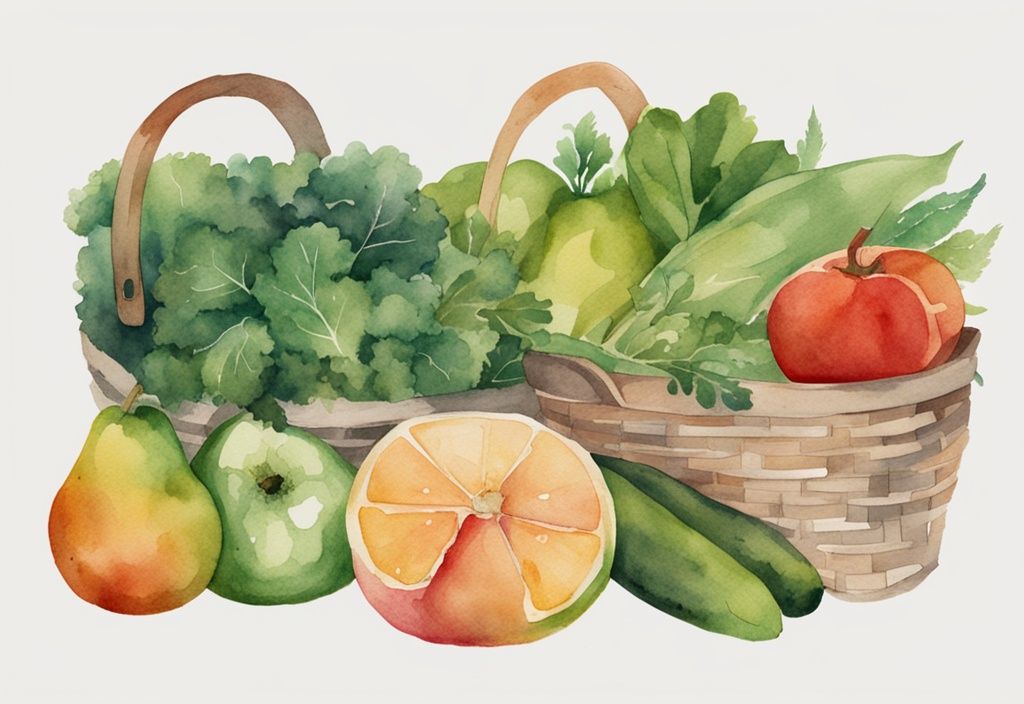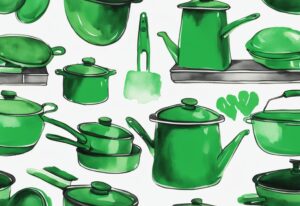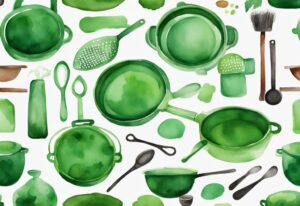Is Pen Ink Poisonous If Eaten? Facts and Safety Measures
Have you ever caught yourself or your child chewing on a pen and suddenly wondered, “Is pen ink poisonous if eaten?” As a mom and health advocate, I’ve asked myself the same question. It’s not as uncommon as you might think, and the health implications shouldn’t be ignored.
In this article, we’ll delve into the make-up of various pen inks, from the ubiquitous ballpoint to the fancier gel pens and even calligraphy inks. It’s crucial to know what we’re potentially putting into our bodies and how it may impact our health.
Together, we’ll learn about the possible symptoms of ink ingestion, necessary first aid steps, and preventive measures for a more mindful, non-toxic lifestyle. Because understanding is the first step towards safeguarding our loved ones and ourselves.
Types of Pen Ink and Their Potential Toxicity
Exploring the potential toxicity of different types of pen ink, especially in light of the question, “is pen ink poisonous if eaten?” can help clarify any concerns one might have. Here’s a deeper look at various types of pen inks and their effects if ingested.
Ballpoint Pen Ink
Ballpoint pen ink primarily comprises dyes or pigments and solvents. Wondering “is pen ink poisonous if eaten”? Generally, ballpoint pen ink is non-toxic when ingested in small quantities. A single pen typically contains a small volume of ink, rarely posing significant health risks. You might experience mild stomach upset or temporary mouth and tongue discoloration, but these symptoms are often short-lived and not severe.
Fountain Pen Ink
Fountain pen cartridges usually hold up to 2.5 mL of ink. This ink is a blend of dyes or pigments, solvents, and sometimes additives to improve writing quality. Asking “is pen ink poisonous if eaten”? Fountain pen ink is largely non-toxic today. However, older formulations, like iron gall inks, contained harmful iron salts. Modern fountain pen inks are safer but might still cause minor gastrointestinal upset if ingested in small amounts.
Gel Pen Ink
Gel pen ink is created with pigments suspended in a water-based gel, ensuring a smooth writing experience. Pondering “is pen ink poisonous if eaten”? Gel pen ink is usually harmless if consumed in small amounts. Like other pen inks, ingestion may lead to mild symptoms such as stomach upset. The pigments in gel pen ink are non-toxic, focusing more on vividness than harm, making accidental ingestion relatively benign.
Calligraphy Ink
Calligraphy ink, popular in artistic writing, comes in bottles with around 30 mL of ink. This ink features a rich blend of pigments and solvents for its distinctive look. Is pen ink poisonous if eaten? Generally, calligraphy ink is non-toxic. However, given the larger quantity, significant ingestion could lead to more serious poisoning, especially in individuals who may have underlying conditions such as pica, an eating disorder where a person compulsively eats non-food items. For more information on pica and its implications, you can visit this resource. Symptoms might go beyond mild gastrointestinal discomfort and could potentially require medical attention if a large amount is swallowed.
Understanding the Composition of Pen Ink
The composition of pen ink encompasses a variety of ingredients each playing a unique role. These components work together to create a product that flows smoothly, adheres well to paper, and offers rich, vibrant colors, all while generally posing minimal toxicity risk.
Basic Ingredients of Pen Ink
Solvents
Solvents are critical in pen ink composition, dissolving other components to form a homogenous liquid. Common solvents, such as water and glycol ethers, ensure the ink flows smoothly and dries appropriately on paper. This enhances the writing experience and generally poses little to no toxicity risk if accidentally ingested in small amounts. So if you’re wondering, is pen ink poisonous if eaten, the answer is generally no in the case of solvents.
Pigments and Dyes
Pigments and dyes provide the vivid colors that make writing with different pens appealing. Derived from various chemical compounds, many of these ingredients are non-toxic. However, they can cause noticeable staining if they come into contact with skin or fabric. When ingested, they may lead to temporary discoloration of the mouth and mild gastrointestinal discomfort. For those curious, is pen ink poisonous if eaten remains a minimal concern with pigments and dyes.

Resins
Resins serve as binding agents in pen inks, ensuring uniform distribution within the solvent and helping ink adhere to paper, which prevents smudging. Their contribution to the smoothness and consistency of writing is significant, and though crucial for ink performance, the small quantities used pose minimal toxicity risk when ingested. Thus, addressing the question, is pen ink poisonous if eaten, brings a reassuring no.
Other Ingredients and Their Risks
Alcohols and Lubricants
Alcohols are included in pen inks as additional solvents that promote quick drying upon application. They help the ink to evaporate swiftly, leaving the pigment on the paper. Lubricants ensure the writing process is smooth and free from clogging. Generally, alcohols and lubricants are considered non-toxic in the small amounts used in inks. Therefore, is pen ink poisonous if eaten becomes less of a concern with these ingredients.
Carbon and Aniline
Carbon is used as a primary pigment in black inks, offering deep, dark colors valued for their clarity. Aniline dyes, once popular, are now largely phased out due to their toxicity. Modern inks use safer alternatives, minimizing health risks. Thus, the recurring question, is pen ink poisonous if eaten, is less applicable to today’s inks that avoid harmful substances like aniline.
Dextrin, Glycerin, and Fluorescents
Dextrin and glycerin serve as thickeners in pen ink formulations. Dextrin achieves the desired viscosity, while glycerin provides smoother flow and prevents quick drying. Fluorescents add brightening effects, making ink more vibrant under specific lighting. These ingredients are generally safe in their minimal amounts, addressing the concern, is pen ink poisonous if eaten, with their contribution to an overall non-toxic composition.
Signs and Symptoms of Ingesting Pen Ink
What Happens If You Chew on a Pen?
When chewing on a pen, the amount of ink ingested is typically quite minimal. Most modern pen inks are formulated to be non-toxic in small quantities, addressing concerns such as “is pen ink poisonous if eaten“.
Nevertheless, certain signs and symptoms can present themselves, though they are generally not severe.
The first and most noticeable symptom of ingesting pen ink is the staining of the mouth and tongue. This can cause temporary discoloration, making the tongue, teeth, or gums appear blue, black, or another color depending on the ink type.
While the appearance might be alarming, this discoloration is usually harmless and can be cleaned with thorough rinsing.
Another common symptom is mild stomach upset. The solvents and dyes used in pen inks, although non-toxic in small amounts, can irritate the stomach lining. This irritation might lead to nausea or a mild stomach ache.
Such discomfort is typically short-lived and can be managed by drinking water or consuming a mild food item to help dilute the ink in the stomach.
In rare instances, allergic reactions may occur. Individuals with sensitivities to certain chemicals in the ink might experience symptoms such as swelling, itching, or a rash.
This does not happen often, but it is important to monitor for any such reactions.

Overall, while the question “is pen ink poisonous if eaten” is valid, the answer aligns with general non-toxicity for most pen inks in small amounts. However, taking precautions and closely observing any unusual symptoms can ensure safety and peace of mind.
First Aid Measures for Pen Ink Ingestion
Pen ink ingestion can be a concerning experience, but knowing the right steps to take can mitigate potential risks. This section covers immediate actions to take and when to contact Poison Control.
Immediate Actions to Take
In the Mouth
If pen ink enters the mouth, start by wiping the area with a damp cloth to remove as much ink as possible. Following this, rinse the mouth thoroughly with water to eliminate any residual ink. It’s crucial to avoid inducing vomiting unless directed by medical professionals or Poison Control. By doing this, you ensure that the ink isn’t inhaled into the lungs, preventing further complications.
When and How to Contact Poison Control
If you’re wondering, “is pen ink poisonous if eaten?” the answer is that small amounts are generally non-toxic. However, contacting Poison Control is important if a large quantity of ink has been ingested or if worrying symptoms arise. You can use the webPOISONCONTROL online tool or call 1-800-222-1222 for expert advice. Be ready to provide detailed information about the type and amount of ink ingested.
While waiting for further instructions, continue to monitor for symptoms like stomach upset or discoloration of the mouth. Being vigilant and following these steps can prevent serious issues and ensure safety.
Preventative Measures
When it comes to preventing accidental ingestion of pen ink, an ounce of prevention is worth a pound of cure. This section provides insights on keeping pens out of young children’s reach, safe handling practices for adults, and ensuring a non-toxic environment.
Keeping Pens Out of Reach of Children
- Secure Storage: Storing pens and other writing instruments in high shelves or locked drawers can keep them out of curious little hands. This simple step can significantly reduce the risk of accidental ink ingestion.
- Parental Supervision: Supervise young children whenever they are using pens, making sure they understand that pens are tools for writing and not toys. Show them the right way to handle these instruments and explain the potential dangers of chewing on or ingesting ink.
Safe Handling Practices for Adults
- Avoid Chewing: It might be a habit, but chewing on pens can lead to an accidental ingestion of ink. While small amounts are usually non-toxic, larger quantities can cause mild symptoms like stomach discomfort and mouth discoloration. Let’s keep those pens out of our mouths!
- Proper Usage and Storage: After you’re done using a pen, place it back in its designated area, ensuring caps are closed tightly. This practice minimizes the chances of pens breaking and leaking, thus reducing the risk of ink ingestion.
- Handling in Workspace: Maintaining an organized and clean workspace, especially in areas shared with children or other adults, is crucial. Dispose of any broken or leaking pens immediately to prevent accidental exposure to ink.

Ensuring a Non-Toxic Environment
- Choosing Non-Toxic Products: Opt for pens that are labeled as non-toxic. Many brands offer inks free from harmful additives, providing peace of mind, particularly in households with children. It’s a small change that can make a big difference.
- Education and Awareness: Stay informed about the potential risks associated with pen ink and make sure your family is aware too. Educating ourselves and our loved ones about these risks can significantly reduce the likelihood of accidental ingestion. Knowledge is power!
FAQs about Pen Ink Ingestion
In this section, we’ll dive into some of the most common questions about the safety of pen ink and what steps to take if ink is ingested, particularly by children.
Can swallowing pen ink cause serious health issues?
Swallowing small amounts of pen ink usually isn’t a big deal—it’s generally considered non-toxic. But let’s not completely dismiss those ink-guzzling accidents. Larger quantities, or even an unexpected allergic reaction, can lead to some pretty uncomfortable symptoms. In such cases, a check-in with a medical professional is a wise move.
What should I do if my child chews on a pen and ingests ink?
First things first, stay calm. I’ve been there, and panicking never helps. Start by gently wiping their mouth with a damp cloth and have them rinse with water. Keep a close eye on your little one for any signs of distress. If you’re unsure or if they ingested a significant amount, don’t hesitate to contact Poison Control for some expert guidance.
One crucial tip: Avoid inducing vomiting. That’s generally not recommended and could make things worse. If you find yourself dealing with a large ink ingestion situation, getting medical advice right away is the best course of action.
Conclusion
Writing ink, providing essential clarity and expression in written communication, is an integral part of daily office supplies and artistic tools. A prevalent concern, often phrased as “is pen ink poisonous if eaten,” generally leads to reassuring answers. Studies and analysis show that pen ink is largely non-toxic, and typical exposure, such as accidentally ingesting small amounts, rarely poses severe health risks.
Immediate and appropriate first aid measures can effectively address minor symptoms that may arise from such incidents. For instance, rinsing the mouth with water promptly can help mitigate mild discomfort or staining. This simple step often suffices in treating minor cases of ink ingestion.
Ensuring the safety of young children around writing instruments is a crucial preventive measure. Storing pens in locations that are inaccessible to children can significantly reduce the risk of accidental ingestion. Adults, too, should practice safe handling, avoiding chewing on pens and keeping them out of the mouth entirely.
Despite the general non-toxicity, it’s important to remain vigilant for any concerning symptoms following ink ingestion. In the case of significant ingestion or observable symptoms, contacting Poison Control is vital. Utilize resources such as the webPOISONCONTROL online tool or contact the help line at 1-800-222-1222 for immediate professional advice.
In conclusion, while the common query “is pen ink poisonous if eaten” may stir initial concerns, understanding that most modern pen inks are designed to be safe alleviates much of the worry. By following preventative practices and responding promptly to any incidents, risks associated with pen ink can be effectively managed.
Hi, I’m Olivia Green, the voice behind nontoxicways.com. I’m passionate about helping you make the shift to a healthier, non-toxic lifestyle without feeling overwhelmed. I love sharing my personal journey, from small changes to big transformations, along with practical tips that make it all feel doable. My goal is to inspire and guide you toward a lifestyle that benefits both your well-being and the planet. Let’s take this journey together, one simple step at a time!














Post Comment